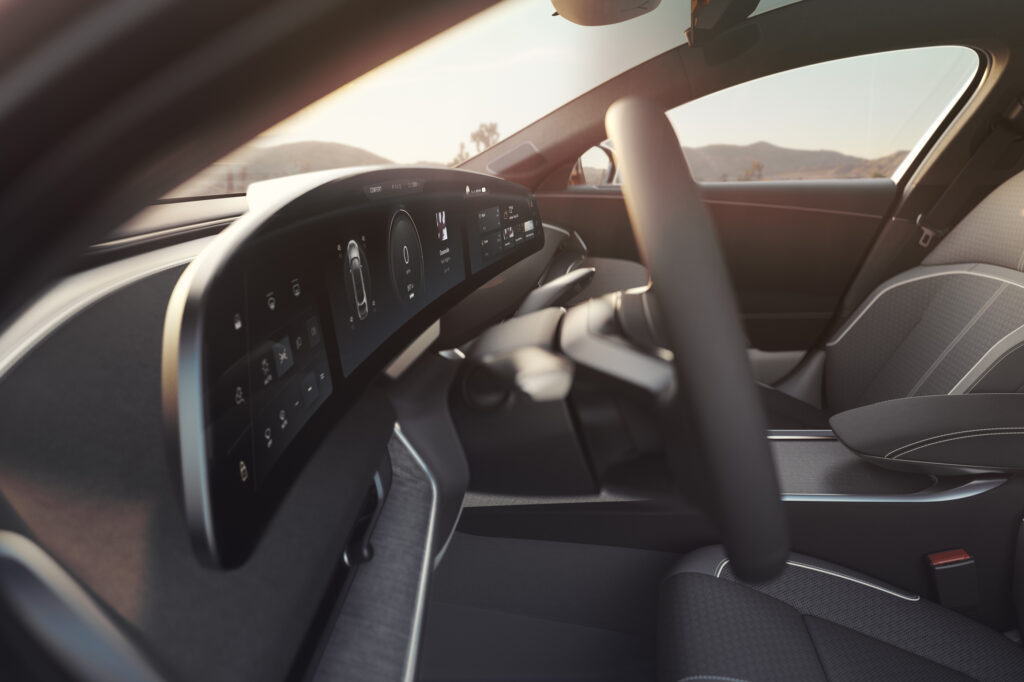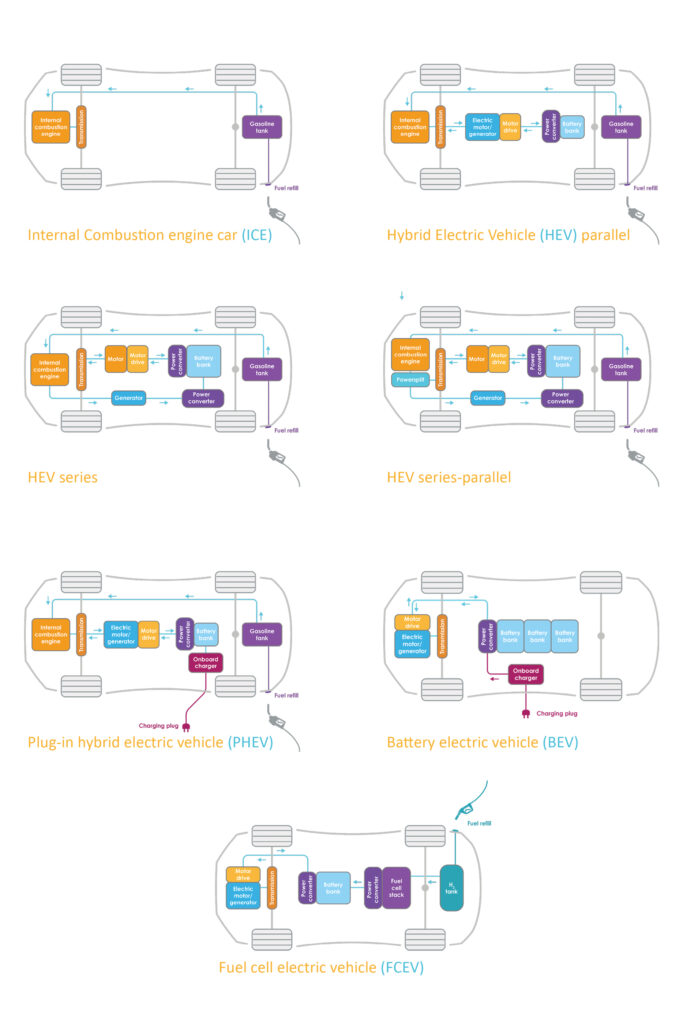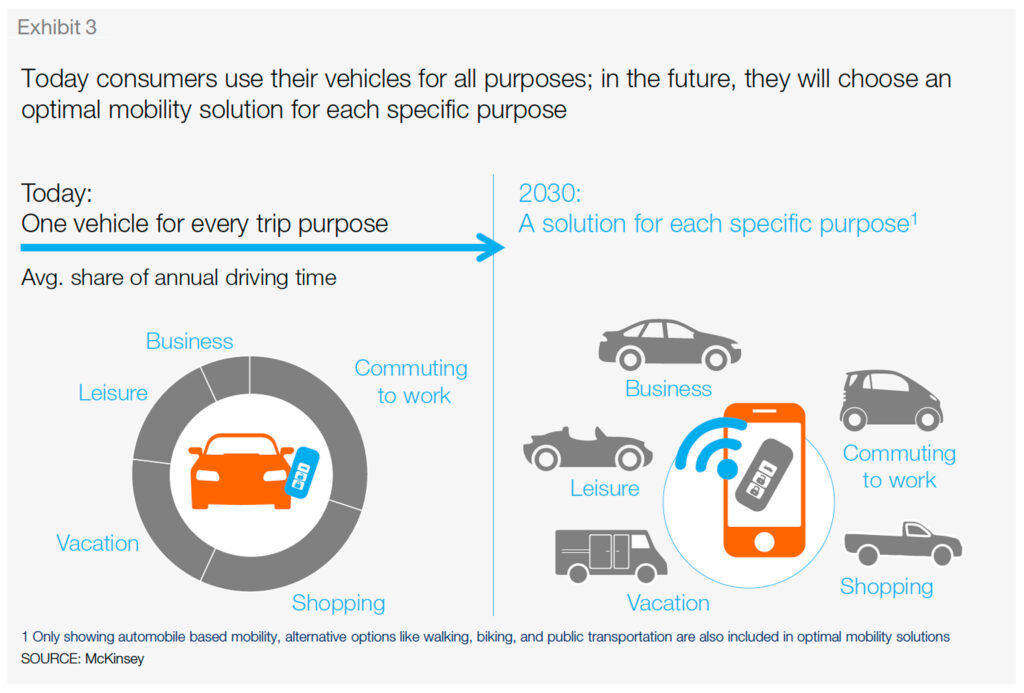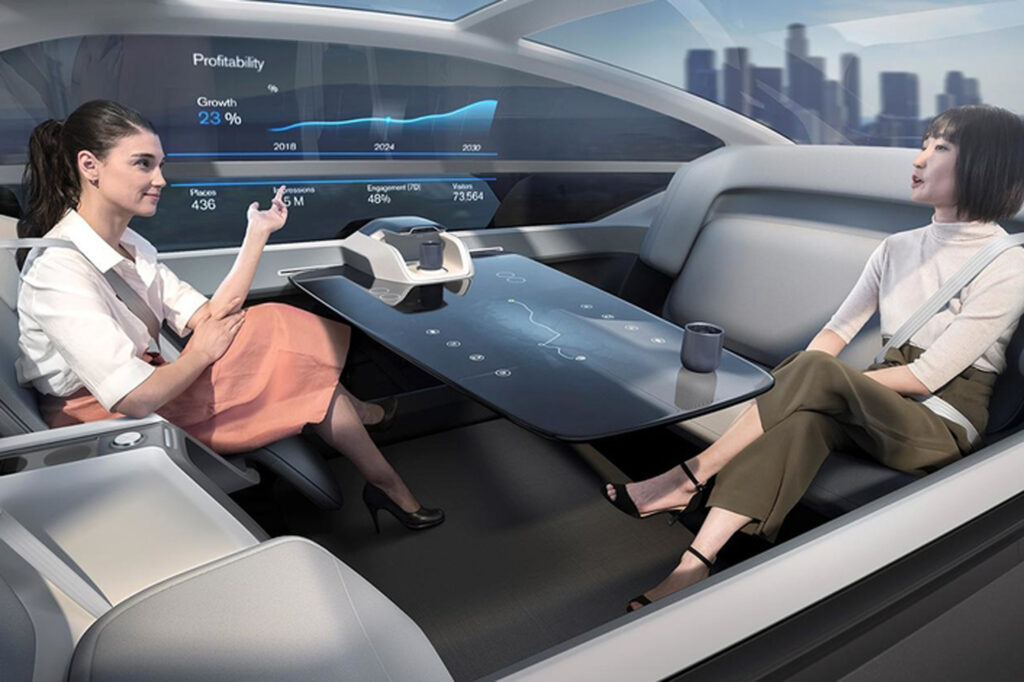The rapid development of new technologies in combination with the drastic change of consumer preferences offers great potential for the digitization of the automotive industry. The preferences of the younger and technically savvy generations are not only changing the behaviour of the consumers, but also the relationship between them and their vehicles. To be able to meet these needs, automakers are currently prioritizing the in-vehicle experiences like never before. They are trying to optimize their customer experience across all facets of the car journey. From vehicle entry and ignition to parking at the final destination, everything is going to change during the ongoing digitization of the automotive industry.

Nobody can anticipate how the industry will look like in 10 to 15 years but the current industry leaders are able to shape this process. Shaping this evolution is currently based on the development of the following disruptive and technology driven trends.
Autonomous Vehicles
Autonomous or self-driving vehicles are currently not publicly available but a lot of different car companies are already testing semi autonomous and autonomous cars on public roads. These self-driving cars will minimize the need for human drivers and transform the everyday mobility of millions of people. Advanced driver assistance systems (ADAS) are already slowly preparing the consumers, regulators and insurance companies for the next step.
Driving automation is divided into six different stages (Level 0 – 5) defined by the SAE levels of automation. At the moment, most of the publicly available cars are limited to SAE Level 2 automation, where the human driver still has to monitor the environment. With the step to the next level, SAE Level 3 automation, the system is able to monitor the environment independently and the driver will be a passenger for a part of the trip. These semi-autonomous cars will drastically change the interaction between drivers and their cars. The driver’s role will shift from driving the car to supervising the automated driving system until he has to take back control over the steering wheel and gas pedal.
Technological challenges like the development of artificial intelligence, machine learning and deep learning will be the key factor for the speed of this transformation. But country specific regulations and the acceptance of the consumers are additional hurdles for the release of semi-autonomous and autonomous vehicles. By reducing accidents based on human errors or fatigue, self-driving cars will help to improve the safety of individual and public transportation in the short term, lead to more productivity in the mid term and to a much better traffic flow in the long term.
Fully autonomous cars will also allow their drivers to use the transit time during their ride for additional activities. Work while commuting, scrolling through social media on the way to the grocery store or even sleeping while long distance road trips will become normal in the future.
Connected Cars
Modern cars are much more than a simple way of transportation for getting from point A to point B. For many people, a car is also an extension of themselves. Connected cars are also extensions of the customers home, school or office. A modern car is equipped with hundreds of sensors and systems that are connected to the internet as well as the surroundings to be able to deliver more convenience to the drivers. With these sensors, cars are already part of the Internet of Things and will get more and more connected features in the future. Current functionality of connected cars include smartphone apps with the most important car data, automated maintenance planning based on the driving habits or automatic emergency calls after accidents. In the future they will also be able to communicate with other cars, traffic lights, fuel stations or even toll stations to be able to deliver the most convenient ride possible.
The digitization of the automotive industry will drastically change the way we are interacting with our vehicles. Starting with a fingerprint sensor on the door for unlocking the car and personalization of the seating position, light color and social media channels up to a completely immersive entertainment hub with new retail channels. The passenger experience will become the most important feature of connected cars in the future.
Electrification
The electrification of all vehicles is currently the best and most effective way for reducing emissions. This process will also be the basis for making mobility 100% emission-free in the future. Since fossil fuels are limited on our planet and their harm done to the environment is huge, the European Green Deal is planning on becoming climate neutral by 2050.
Currently, electric vehicles (EV) are too expensive, have poor batteries and also a poor range. The charging infrastructure is not where it should be and most of the time the charging stations are also not powered by renewable energy and therefore also not emission-free. Lower battery costs and more charging stations are new possibilities for all electrified vehicles. Electrified vehicles do not only include battery powered electric cars like a Tesla, they also include hybrid cars, plug-in hybrids and hydrogen fuel cell cars. With the combination of classic combustion engines and electric engines, hybrid cars will make up a large percentage of future vehicle sales and be especially popular for people living in less dense populated areas.

The biggest growth for all electrical vehicles will take place in large or densely populated cities. Especially megacities like Tokyo or Paris or cities with strict emission regulations and consumer incentives like a lower tax, special parking or driving privileges will profit more from the electrification of the automotive industry than the rural areas.
Shared Mobility
Shared mobility is not really a new concept. The first car sharing was already offered back in the 1940ies in Switzerland. But the tech-enabled shared mobility we know today just started a few years ago. It is an umbrella term for all services where the actual vehicle is shared like the classic car sharing and where just the ride is shared like public transportation, taxis, carpooling, ride sharing and ride hailing.
Shared mobility will become a viable alternative to classic vehicle ownership in the future, especially in big cities. If people stop paying for the vehicle itself and are starting to pay for mobility, they will also be able to choose the best solution for every specific purpose rather than using their cars as all-purpose vehicles. Everything will depend on the purpose. If you just want to commute to your office for a few kilometers on a sunny day in summer you may just need a E-Scooter or small car, while you may need a bigger car for a shopping trip with your whole family. This focus on the purpose may also lead to the development of vehicles optimal for only one specific task to fully meet the needs of the consumers.

When self-driving cars are available to the public, shared mobility will be a key driver for the growth of the automotive industry. There are already early signs that the importance of car ownership in megacities is declining in favor of shared mobility. Owning a car in a big city has a lot of different disadvantages. From limited and more expensive parking, to higher congestion fees and more traffic jams. Everything is getting more and more complicated when owning and using a personal car in a densely populated area. While the people living in rural areas will still prefer owning a private car, there will be a huge potential for a lot of completely new business models and also new players in the industry along this transformation.
Shared Autonomous Electric Vehicles (SAEV)
Shared autonomous vehicles will have the largest disruptive potential by simply combining all four trends to one concept. From the customer’s point of view all SAEV’s will be more flexible and more personalized while still emitting less exhaust fumes and noise into the environment. Additionally they will also take up less time because they are moving fully autonomously and drivers can do whatever they want during the ride. Shared autonomous vehicles will also be more accessible for people with physical disabilities or people without a drivers licence and also more affordable because you only need to pay for mobility when you really need it.

Conclusion
The future in-vehicle experience does not only offer a huge potential for automakers and industry leaders. It is also a great opportunity for UI and UX designers. While the in-vehicle user experience has been quite static for decades, automotive interaction designers have already fundamentally changed the in-car experiences in the last few years. Automotive interaction designers will be the bridge between the highly advanced technologies and the passengers in future. Enabling the passengers to access these technologies in a user friendly and simple way will be the biggest challenge for interaction designers in the automotive industry. Possible research questions for interaction designers could include but are not limited to:
- How can autonomous vehicles (SAE Level 3-5) gain the trust of the passengers?
- Is the current usage of ADAS in SAE Level 2 cars helping to gain trust in the systems and preparing passengers, insurance companies and regulators for the next step?
- How is the role of the driver changing during the development of more advanced cars with more and more self-driving features?
- How are we interacting with our cars in 10 years?
- How can we adapt and optimize the in-car experiences to the needs of different drivers and passengers?
- Is the usage of touchscreens safer and better than the usage of classical knobs for different purposes?
- How does the in-vehicle infotainment of the future look like and what does it offer to the different passengers?
- How does the most convenient ride look like for different target groups?
- How immersive is the future in-vehicle experience going to be?
- Does the usage of extended reality in cars add value for the passengers?
- Is artificial intelligence going to affect the design of the in-vehicle infotainment systems and how the passengers are interacting with it?
- Is shared mobility going to skyrocket after the release of the first SAE Level 5 cars?
- Is shared mobility a viable alternative to classic vehicle ownership throughout Europe?
Resources:
Accenture – Mobility as a Service; Auto 2030 Report; StartUs Insights – Automotive Industry Report; CBInsights – Future Of In-Vehicle Experience; Frances Sprei – Disrupting Mobility; Experiences per Mile – 2030 Report; PWC – Five trends transforming the automotive industry;
Best practise examples for connected cars in 2020:
Tesla Infotainment, Rivian Infotainment, Lucid Air Infotainment, Byton Connected Car, Mercedes-Benz MBUX, Porsche Connect, Polestar Android Automotive, Audi MMI, BMW iDrive
Research in Austria:
Austrian Mobility Labs; Mobility Lab Graz; Aspern Mobil LAB Vienna; MobiLab OÖ; Thinkport Vienna; UML Salzburg; Austrian Mobility Research FGM-AMOR; Virtual Vehicle Research; FH JOANNEUM
Research worldwide:
R&D Centers of car manufacturers, Center for Automotive Research; Harman; McKinsey Center for Future Mobility; Accenture Automotive; Startus Insights Automotive; CBinsights Automotive; Deloitte Digital – Ericsson Automotive; IBM Institute for Business Value
